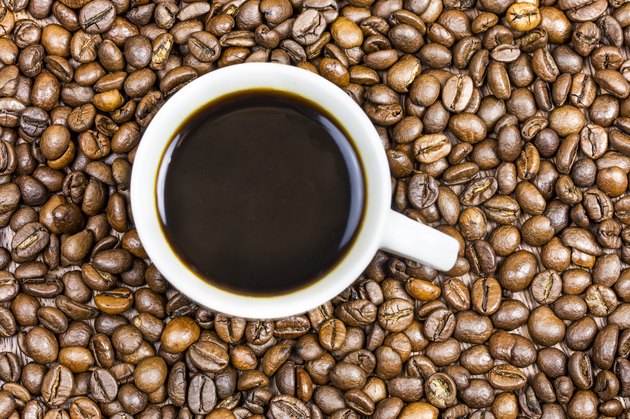
Tea varieties such as English Breakfast and Earl Grey fall into this category. Green tea also undergoes very little processing and is rich in catechins, which is one of nature’s most powerful antioxidants.īlack tea, known in some countries as red tea, comes from leaves that are fully oxidised.
#CAFFEINE IN COFFEE FULL#
White tea is made from the bud from the tip of the plant, which is full of nutrients. Only the baby tea leaves are picked and this is the least processed of all the teas. White tea is the most precious of all the teas, as they are harvested by hand for a few days each spring.

These terms refer to the tea’s oxidisation levels, with black being fully oxidised, oolong - partly oxidised, and green and white tea - unoxidised. Within the realm of tea, you will find four categories: black, oolong, green and white. Chamomile, peppermint and other teas that do not come from the Camellia sinensis plant are not considered ‘true’ teas but herbal or infusion teas. So what are the different types of tea and how do they differ?įirst, ‘true’ tea originates from the Camellia sinensis plant. If you have acid reflux, caffeine in general is not ideal as it relaxes the sphincter muscle that normally prevents stomach acid from bubbling up the oesophagus. In particular, coffee is highly acidic and irritates the gastrointestinal tract. Disruptive sleep patterns occur when caffeine is taken during the day to combat fatigue, while its effects continue to spill over into restless sleep during the night.Ĭoffee and tea are also a no-no for those with stomach problems, such as acid reflux or heartburn. Insomnia, as it is known to increase anxiety. Just as with other addictive substances, people who try to quit drinking coffee and tea have been known to exhibit withdrawal symptoms, such as headaches and fatigue.Ĭaffeine is also not suitable for people suffering from While caffeine has its advantages, it is unfortunately still a drug which can cause dependency. These figures are just estimates, and can vary according to the type and brewing process. *In general, one cup of coffee contains 60 to 180 mg of caffeine, while one cup of tea contains 14 to 70 mg of caffeine.

And, while it doesn’t actually help with weight loss, it is a great alternative to sugary drinks.

In addition, tea also contains catechins, which has numerous benefits such as lowering blood pressure and cholesterol levels. also suggest links to reduced risks of Alzheimer’s and dementia. This stimulant promotes the increased firing of neurons and has been shown to improve various aspects of brain function, including memory, mood, energy levels and general cognitive function.
#CAFFEINE IN COFFEE FREE#
These free radicals are elements that damage our cells and have been linked with health issues.īesides being a source of antioxidants, coffee and tea also contain caffeine, which when taken in moderation (not more than 400mg* a day) can have benefits for your body. Benefits of CaffeineĪfter constantly being nagged at about how they should be cutting down on their daily cuppa, coffee connoisseurs and tea aficionados will have their hands in the air rejoicing that their favourite drink is actually good for them! There is, however, a caveat: that they be consumed in moderation, preferably unsweetened.Ĭoffee and tea are rich in antioxidants that help to fight free radicals.

Let’s get through all the clutter of information and take a look at what we know for sure. Yet in recent years, literature seems to point towards the suggested benefits of coffee and tea consumption, ranging from improved cognitive ability to reduced risk for cancer, gallstones, Parkinson’s and even coronary disease. For a long time, the consumption of caffeinated drinks such as coffee and tea was associated with cardiovascular problems, such as hypertension, rhythm disturbances and heart attacks.


 0 kommentar(er)
0 kommentar(er)
